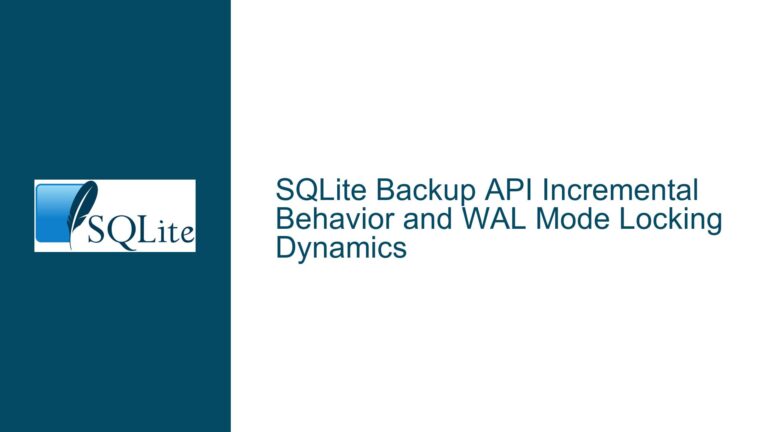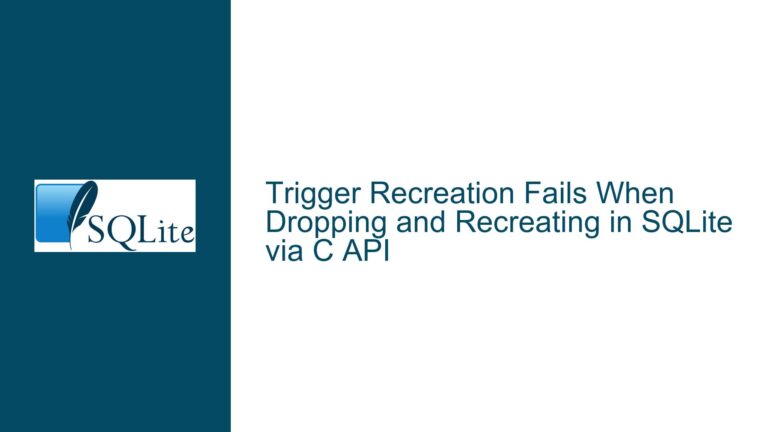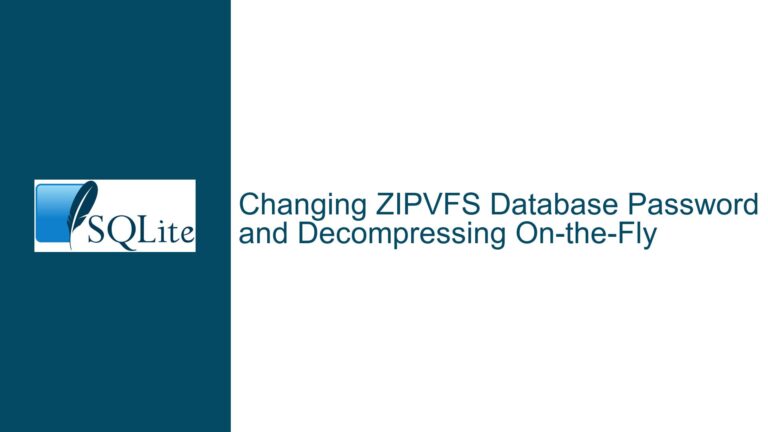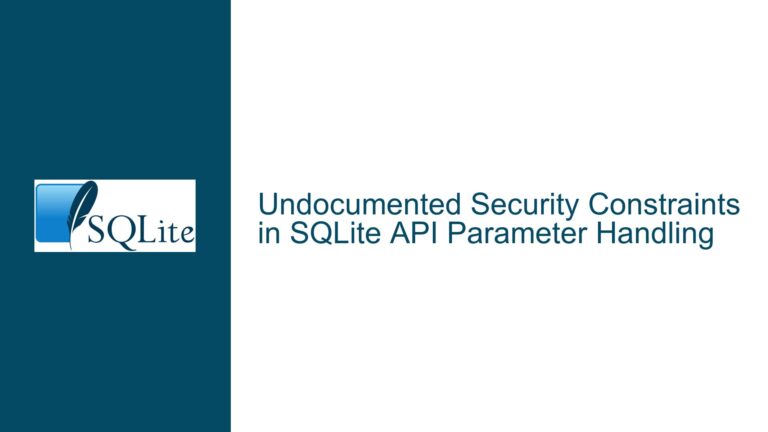Addressing SQLite 3.26.0 Vulnerability Concerns and Upgrade Guidance
Understanding SQLite 3.26.0 Vulnerability Reports
The core issue revolves around reports of a "vulnerable" SQLite 3.26.0 version detected in a system. SQLite 3.26.0 was released in December 2018 and is considered outdated compared to the latest stable releases (e.g., 3.43.x as of 2023). The term "vulnerable" in this context lacks specificity, as no explicit Common Vulnerabilities and Exposures (CVE) identifier or technical details about the alleged vulnerability were provided in the initial report. This ambiguity complicates efforts to confirm or address the concern definitively. SQLite’s development team maintains a transparent record of CVEs affecting the library, with detailed explanations of each vulnerability’s scope, impact, and resolution. Notably, SQLite 3.26.0 does not appear in the list of recent CVEs documented by the project, which suggests that either the reported vulnerability is unverified, misinterpreted, or tied to a non-standard deployment scenario.
A critical nuance here is the distinction between vulnerabilities inherent to the SQLite library itself versus those arising from how the library is integrated into third-party applications. SQLite is designed as an embedded database engine, meaning its security posture heavily depends on the host application’s implementation. For example, SQL injection vulnerabilities are typically caused by improper input sanitization in application code rather than flaws in SQLite’s core logic. The SQLite CLI (command-line interface) is a minimal tool intended for development and debugging; its attack surface is limited to scenarios where it is misused in environments requiring elevated privileges or exposed to untrusted inputs. Without concrete evidence of exploitation or a documented CVE, labeling SQLite 3.26.0 as "vulnerable" risks conflating theoretical risks with actionable security flaws.
Additionally, false positives in vulnerability scanning tools often contribute to such reports. Automated scanners may flag older software versions as "vulnerable" based solely on age or heuristic patterns without confirming exploitability. SQLite’s development philosophy emphasizes backward compatibility and robustness, with newer versions rigorously tested against regressions. This stability reduces the likelihood of breaking changes during upgrades but does not eliminate the need for due diligence when addressing security concerns.
Factors Contributing to Vulnerability Misconceptions in Older SQLite Releases
Several factors contribute to the confusion surrounding SQLite 3.26.0’s security status. First, the absence of a specific CVE or reproducible exploit scenario makes it difficult to validate the claim. Vulnerability databases and scanners frequently rely on CVE identifiers to map issues to fixes, and without such a reference, the report becomes a moving target. Second, the term "vulnerable" is often misapplied to software that is merely outdated, even if no known critical flaws exist. SQLite’s release cycle prioritizes incremental improvements and bug fixes over frequent major version overhauls, which can lead to misunderstandings about the necessity of upgrading. For instance, a version labeled "old" might still be fully functional and secure in its intended context if deployed correctly.
Third, the role of the host application cannot be overstated. SQLite’s lightweight design delegates responsibilities such as access control, input validation, and transaction isolation to the application layer. If an application using SQLite 3.26.0 exhibits security flaws, the root cause may lie in the application’s misuse of the library rather than the library itself. For example, enabling write-ahead logging (WAL) without proper file system permissions or executing untrusted SQL queries directly could introduce risks unrelated to SQLite’s codebase. Developers unfamiliar with these nuances might erroneously attribute application-layer vulnerabilities to the embedded database.
Fourth, the SQLite project’s approach to CVEs differs from other databases. The developers meticulously document vulnerabilities and often backport fixes to older versions when feasible. However, support for legacy versions is not indefinite, and 3.26.0 has long been superseded by releases containing hundreds of optimizations and patches. Users expecting dedicated fixes for unsupported versions may need to upgrade to a maintained release branch. Finally, misinformation or incomplete understanding of SQLite’s security model—such as assuming it provides network-level access control or encryption natively—can lead to misplaced concerns about vulnerabilities that do not exist in the library’s scope.
Comprehensive Remediation Strategies for SQLite Version Concerns
To resolve uncertainty around SQLite 3.26.0’s security status and mitigate potential risks, follow these steps:
Verify the Vulnerability Claim: Cross-reference the reported issue with SQLite’s official CVE list and release notes. If no matching CVE exists, assess whether the concern stems from a third-party tool, misconfiguration, or application-specific flaw. Tools like
sqlite3_version()can confirm the library version in use, while debugging logs or stack traces may reveal context about how SQLite is being utilized.Upgrade to a Supported SQLite Version: Migrate to the latest stable release (e.g., 3.43.x). SQLite maintains exceptional backward compatibility, minimizing the risk of breaking existing applications. Test the upgrade in a staging environment, paying attention to schema definitions, custom functions, and triggers, as newer versions may enforce stricter parsing rules or deprecate legacy behaviors. Use the
sqlite3_changes()andsqlite3_total_changes()functions to validate data integrity post-upgrade.Audit Application Dependencies: If SQLite is embedded within a third-party application, consult the vendor’s documentation to determine whether they bundle a specific SQLite version and if updates are available. Many applications statically link SQLite, requiring a full application update to adopt a newer library version. For in-house applications, recompile the code against the updated SQLite amalgamation source, ensuring that compiler flags and configuration options (e.g.,
SQLITE_THREADSAFE,SQLITE_OMIT_LOAD_EXTENSION) align with security requirements.Implement Defense-in-Depth Measures: Regardless of the SQLite version, enforce least-privilege access controls on database files, validate and parameterize all SQL inputs to prevent injection, and avoid exposing SQLite databases to untrusted networks. Consider using extensions like SQLite Encryption Extension (SEE) or third-party solutions for encryption at rest if sensitive data is stored.
Engage with the SQLite Community: If a reproducible vulnerability is suspected, file a detailed report on SQLite’s public forum or contact the development team privately. Include steps to replicate the issue, sample code or queries, and the observed impact. For mission-critical systems, explore commercial support options to ensure timely responses to security inquiries.
By systematically addressing versioning concerns, contextualizing vulnerability reports, and adhering to SQLite’s best practices, users can maintain secure and reliable deployments even when working with older library versions. The project’s transparency and commitment to stability further reduce the long-term maintenance burden associated with upgrades.






